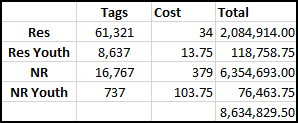DouglasR
Well-known member
Sorry... bored at work... trolling... a bitCertainly a different tone here than when you first posted about this hunt.
My original post said nothing about crowding or opportunity.
As a new hunter The ease of obtaining a otc archery tag in Colorado is one of the things that drew me towards elk/mountain hunting thus leading to me finding something that I really enjoy to do. If there was much more red tape to jump through idk if I would’ve done it. Aren’t hunter numbers on the decline? Don’t we need more hunters to help support conservation?
With that being said, idk wtf I’m talking about and I should really keep my mouth shut.
Ps. How’s your post hunt depression going? Have you watched Randy’s Sonoran safari episodes?






